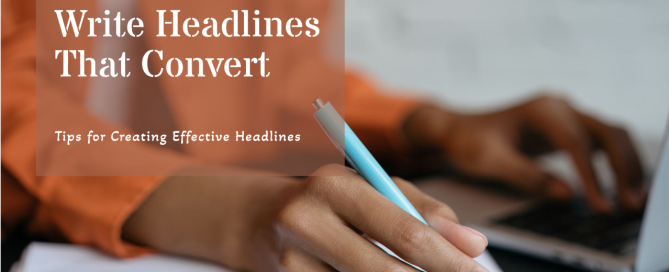7 Step SHAPE UP to Writing Great Headlines
Great headlines are a must. People read headlines 80% of the time, but only 20% will read the rest of your content. Not fantastic odds for a copywriter.
If people only read the headline and move on, you’re sunk. If people don’t read and buy what you’re selling, your reputation is compromised. Your clients will probably fire you.
Some facts
- Ordinary titles don’t get click throughs
- Cutesy headlines don’t tell readers what’s in it for them
- Great headlines sell your content
There are some copywriters that write great headlines, day after day, time after time. Those are the folks that you follow, always read when you get up in the morning, or check their tweets on an hourly basis. Have you ever wondered why they’re so good?
Exceptional copywriters work hard at their profession. They are originals, not copycats. They study headlines that work and have a razor-sharp grasp of why and how certain titles work. Not to mention they have a keen understanding of their audience’s needs.
Great headlines adroitly tap into what people want. You can count on people wanting to know something that will give them some kind of advantage. It doesn’t matter whether it’s knowledge for solving a problem or being let in on a great secret very few people know about.
If you count on the similarities of human nature, writing compelling headlines and titles is relatively easy. Just remember SHAPE UP. SHAPE UP is your 7 steps to writing great headlines.
- S imple. Simplicity is a must. Concisely communicate a circumstance, fact, or effect. Keeping a title or headline short and sweet carries 2 major benefits. First, you only have 60 characters or less for the entire headline to show up in the search engine results page. Secondly, it will look better on your Twitter or Facebook feed.
- H ow to. People surf the net for information. They either want to know how to do something or are searching for the best price on a product. Using short words like “how”, “why”, “new”, and “your” cash in on your audience’s need to know.
- A dvantage. You must give your audience a distinct advantage. It’s the “what I will get out of acting on this”.
- P romise. Your promise must be intriguing and irresistible. Your title must convey what’s in it for the reader, but make sure that the content will deliver. Don’t mislead your audience with the title. Nothing destroys your credibility like deluding your reader.
- E xciting. Your headline or title must be eye catching and head turning. Something that is “novel”, “new”, a “secret”. Antonyms such as “worst” and “don’t” also work well in headlines.
- U seful. Convey something that a reader will find useful in the headline, then deliver on your promise by giving information that can be put into practical application.
- P roclaim. This is your call to action. Your “read me”, “buy me”. I want you to do this because it’s the best.
If you remember SHAPE UP, you will be well on your way to writing great headlines and titles that sell. After all, if you made it this far, you read this entire blog post. And if you’re still stumped, give Directory One a call. Their expert copywriters will be glad to help out.

